The cost of living is ridiculously high around the world, and we are all constantly looking for ways to cut back on costs. Young adults are finding the process of homebuying more difficult than ever before. Fortunately, many people have come up with innovative ways to solve the problem of high rental rates.
Downsizing has proven to be the way of the future, with several people attaining otherwise-impossible dreams of homeownership. Many more have paid off crippling mortgage loans early by transitioning to compact living. Let's explore how one newlywed couple transformed a '50s silo into their ideal home.
A Couple's Ingenious Creation

When architect Christoph Kaiser purchased a silo from a Kansas farmer, he intended to use it as a storage space for his tools. But sometime after he had it dismantled and transported to his home in Arizona on the back of a pickup truck, he decided instead to construct a deluxe house with the silo.
Once he had reassembled the silo, Christoph started modifications to it. With the help of his wife, stylist Shauna Thibault, he conceptualized the silo tiny house. The plan they devised would involve installing custom-made windows and doors, insulating the space, and finishing it with a paint job.
Overcoming Challenges Undaunted
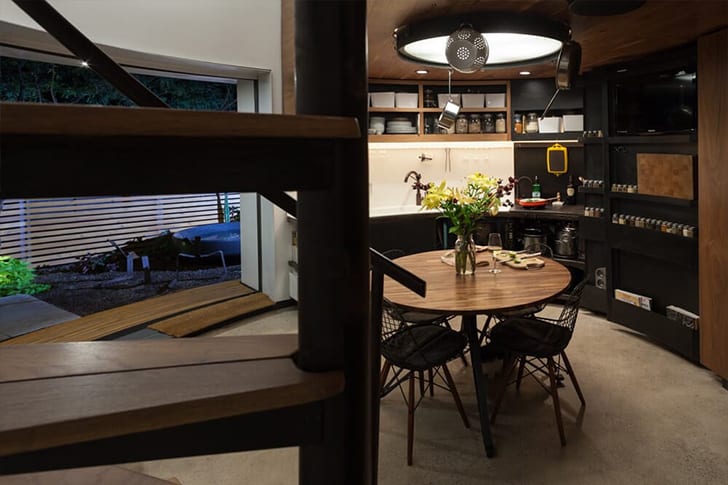
The silo-home construction process wasn’t without its fair share of challenges. Christoph had actually bought the silo before meeting Shauna. After they exchanged vows, he definitely had to do some convincing before she would buy into the idea of moving into such a small space.
Christoph and Shauna also had to take breaks when they were strapped for cash. It ended up delaying the construction, but Christoph was able to work on making money during those downtimes until the couple could afford to carry on with the project once more.
Growing Closer In Their Marriage
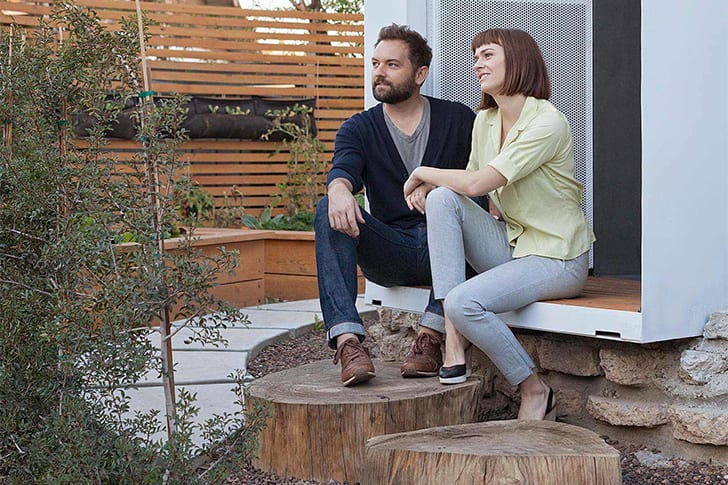
According to Shauna, she and Christoph were initially met with skepticism when they told friends and family members about their plans to move into the silo house. They thought that the young couple was simply experimenting and would eventually move into a more conventional dwelling.
But Shauna said that they loved the minimalist living and even hosted a party of 12 during one Christmas thanks to their generous outdoor space. She and Christoph also believed that moving into the silo house brought them even closer together not just physically but emotionally as well.
Silos Are Surprisingly Versatile
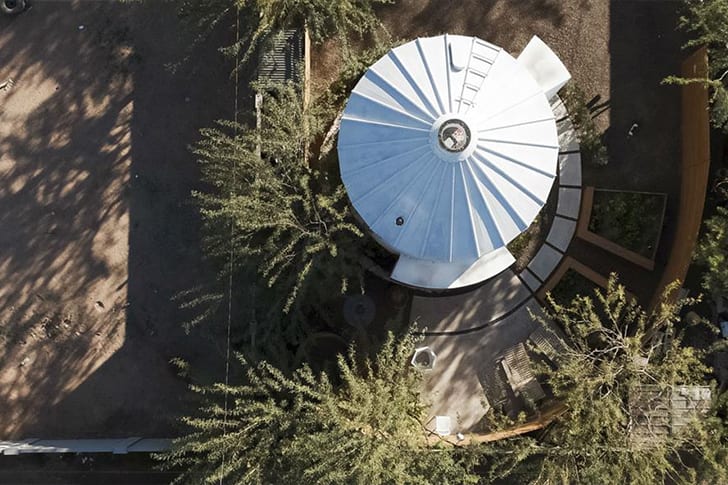
The primary use of silos is to store grains in bulk, as well as an assortment of other products including coal, woodchips, and sawdust. But many people now use these storage structures in unconventional ways, giving them modern upgrades with a little creativity and innovation.
Developers have converted decommissioned cement silos into apartments, and artist Guido Van Helten has made a name for himself by transforming these structures into canvases for his artwork in Europe, Australia, and the United States. The portable silos made out of corrugated iron sheets also have a great deal of potential.
An Architect's Inspired Idea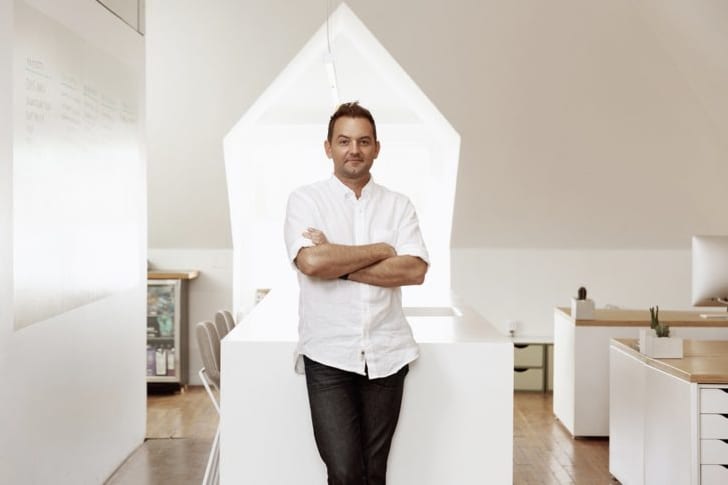
Christoph was shopping around Craigslist for a classic grain silo when he came across a 1950s silo that he thought would perfectly solve his storage problems. After a quick Google search, however, his mind started going down a different path as he considered the endless possibilities for transforming the storage shed.
Inspired by what he had seen in the search results, Christoph would soon have much more in mind for the silo than just storage. It wasn't long before he wanted to try out the tiny-home lifestyle for himself, and the silo was precisely what he needed to bring his idea to fruition.
Out Of Error, An Exciting Opportunity
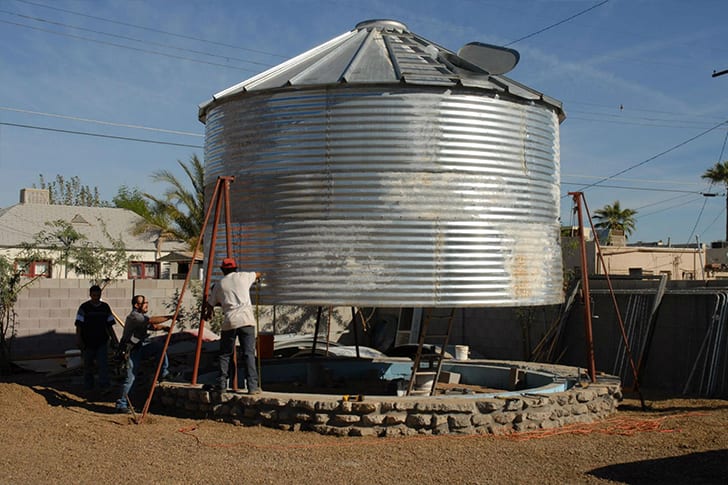
Armed with a background in both commercial and residential design, Christoph got the project started in no time. He put his skills as a designer to great use by planning out every single inch of the construction, at which point he encountered a major setback.
The silo was even smaller than he had thought, so he called the farmer who had sold him the storage shed. It turned out that the farmer had simply gotten the measurements wrong. But Christoph chose to see it as an opportunity instead of a limitation, later explaining that he loved a challenge.
A Bold Venture Together

As with most newlyweds, Christoph and Shauna's next order of business after tying the knot was to find a suitable home for starting their lives together. Newlyweds often choose to rent before eventually looking into homeownership, but this Phoenix couple decided to go a different route.
Instead, the architect and his new wife planned to build their own house, taking the plunge into home investment. Going even further off the beaten track, the couple opted for a small space rather than the sizeable mansion that people would typically build for themselves.
A Self-Motivated Endeavor
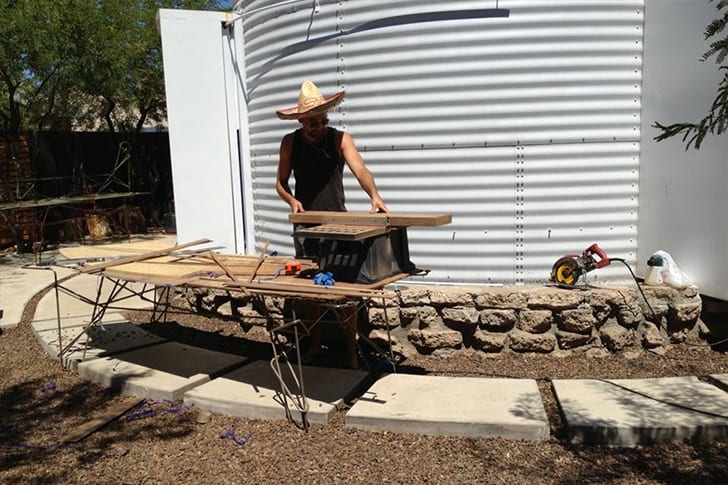
Like most owners of tiny homes, Christoph put in the majority of the construction work himself, though he outsourced help for the more complex aspects of the building process. He would work on weekends and evenings, with friends and neighbors chipping in whenever they could.
By doing the bulk of the work themselves, owners can personalize the tiny-home construction process and keep their overall expenses manageable. It also helps new homeowners to avoid debt because the cost of utilities such as power and water is typically lower with tiny living.
Constructing An Idyllic Tiny Home
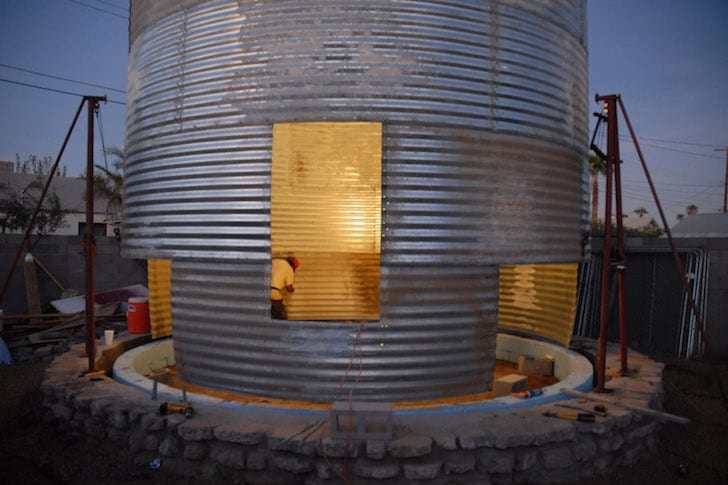
Another advantage of constructing tiny dwellings is the ability to set them up on whatever lots we please. Of course, we should always take any required permits or lease costs into account, though building on our own pieces of real estate would be ideal, obviously.
Christoph constructed the silo tiny home on a permanent foundation just like any other house. He also designed a desert garden for the tiny home that features 16 mesquite trees, a long entranceway, and a water feature, creating an idyllic rural atmosphere despite its location smack in the middle of Phoenix.
A Visionary Undertaking
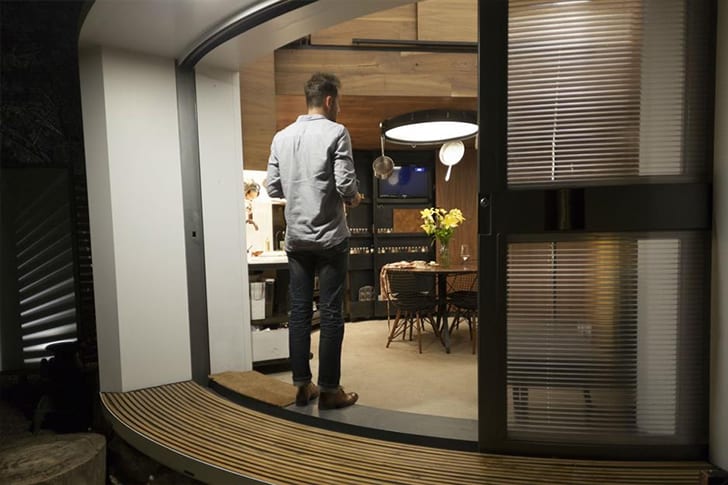
Christoph described the silo-home challenge as turning an uninhabitable space into an appealing abode for himself and Shauna. But he wanted the silo house to be more than just a roof over their heads. Rather, his design aimed to create a space they would enjoy spending time in.
As an architect, Christoph considered exterior and interior design to be equally important in carrying out the couple's vision for the silo tiny home. Seeing the various elements come together during the construction process filled him with confidence that his efforts hadn't been in vain.
Their Daring Investment Paid Off
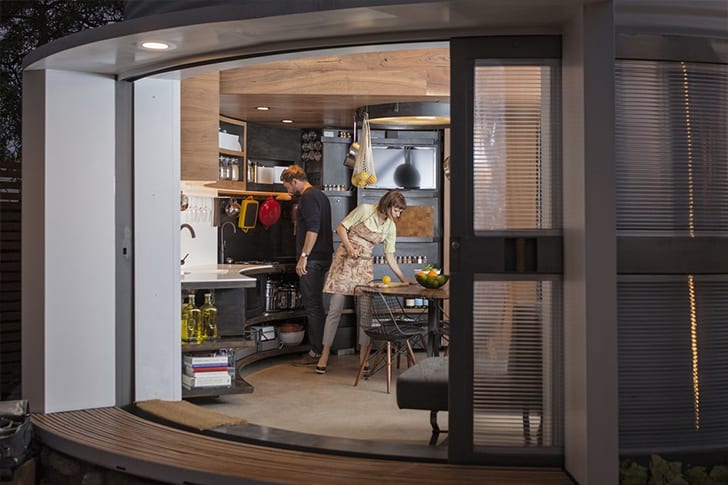
Shauna and Christoph soon moved into their very own silo home, starting a new chapter in their lives together. Christoph estimated that the total cost of the construction was somewhere between $80K and $100K, significantly higher than the average of $60K for a tiny home with all the basic amenities found in regular houses.
However, the price of a tiny home could be lower or higher depending on the number of luxuries included. For comparison, a starter house in the Washington, D.C., area sells for an average of $335K. Virginia offers the most affordable starter homes at an average of $42.3K.
A Peaceful Sense Of Seclusion
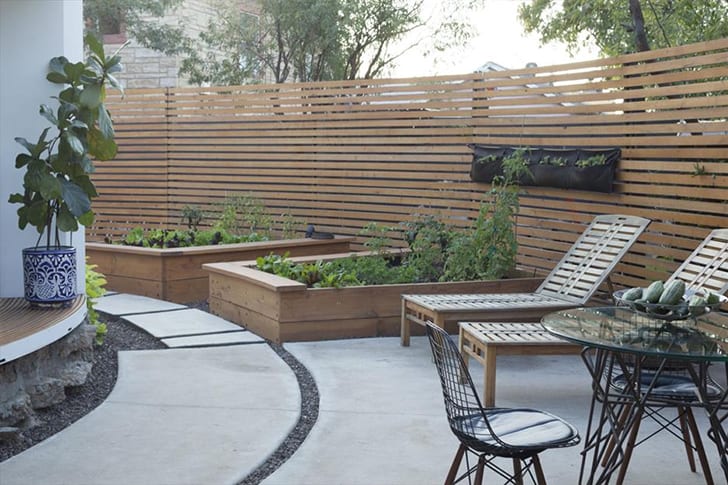
Christoph and Shauna lead an almost cloistered existence even in the yard outside the silo house. When they lounge on their lawn chairs outdoors, the water feature helps to drown out the freeway noise, making them feel like they're hidden away from the world around them.
On the other hand, the yard might need some flood restoration after a rainstorm. There were even incidents when water leaked inside under the front and back doors. However, Christoph was committed to fixing the problem, feeling responsible for any issues the silo home might have.
Becoming More In Tune As A Couple
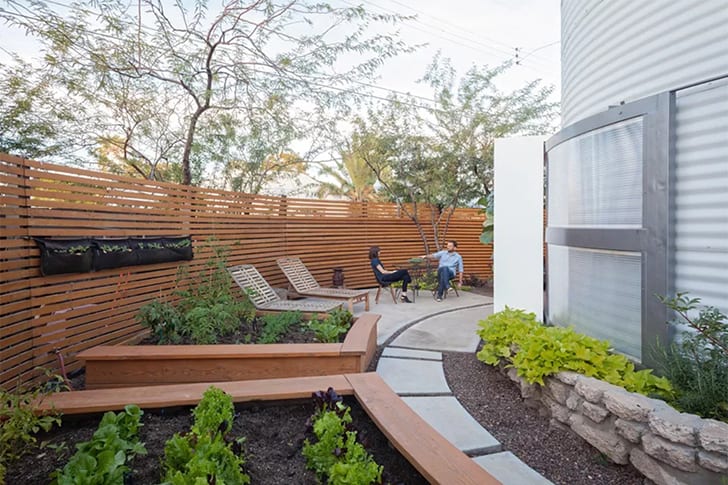
There's much more to keep Shauna and Christoph busy around their tiny house than we might think. Shauna explained that besides simply lounging in the yard, they could weed their garden. Seasonally, they also had crops from their garden to harvest once they began farming.
Shauna added that there's plenty to do inside the house as well. As they performed household tasks together, she and Christoph established a rhythm. She referred to their silo house as "very coupling," saying that it provided all the couples therapy they could ever need.
An Illuminating Skylight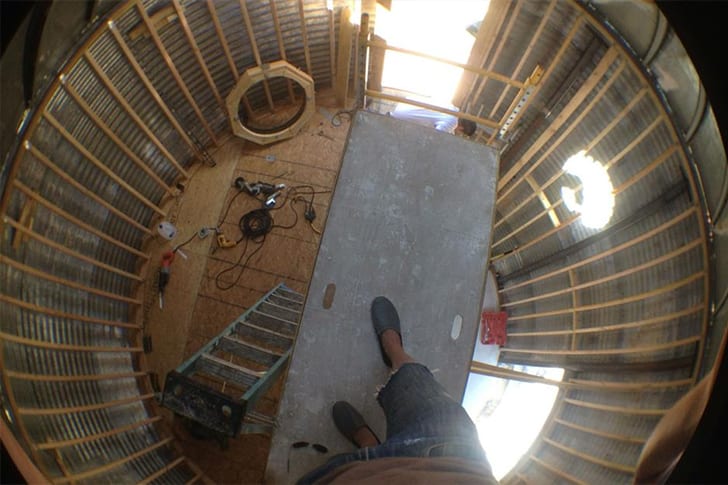
In 2013, the young couple was ready to move in after 18 months of constructing their cool mansion in miniature. Through hard work and meticulous planning, Christoph had managed to transform a 340-square-foot cylindrical silo into a cozy and adorable two-story home with several innovative features.
For example, light flooding in through the skylight in the 26-foot-high ceiling helps to brighten up the home. Christoph thought it was important to showcase the full height of the silo in his design, making the relatively small space seem quite generous compared to other tiny homes.
An Expansive Layout

Most tiny houses adopt open floor plans, sometimes using only curtains to cover the entrances to spaces like the bathroom or bedroom for privacy. The two-story silo home features a similar design, thus freeing up square footage in what would otherwise be a cramped space.
Only the bathroom and the upstairs sleeping loft offer some privacy in Christoph and Shauna's house. They may not have a lot of space inside to host a large party, but this problem can be solved by simply extending the living room to the backyard.
Keeping It Simple And Homey
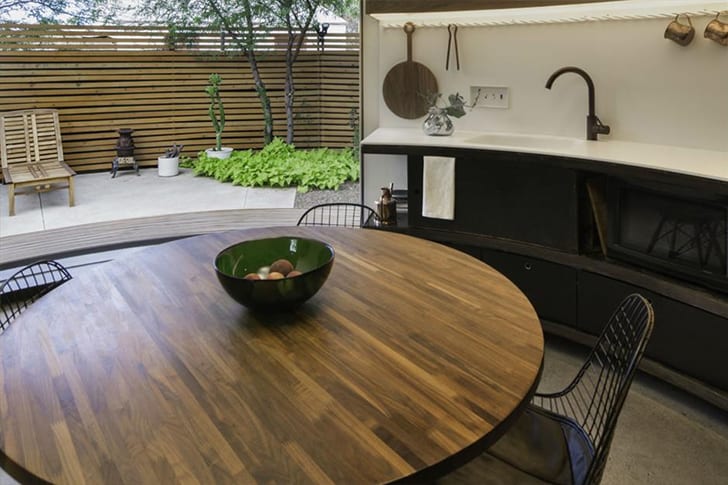
Christoph and Shauna wanted the silo home's decor for the internal living space to be simple yet exude a warm and inviting atmosphere. As Christoph would later explain during an interview with Dwell, the couple opted for muted tones to create a sense of calmness.
For the cabinetry, Christoph and Shauna chose walnut colors with rich grain tones to provide the texture and warmth they envisioned. Christoph also pushed the limits of design to preserve elements like natural light in his efforts to achieve a comfortable space within the silo home.
A Spacious Loft Bedroom
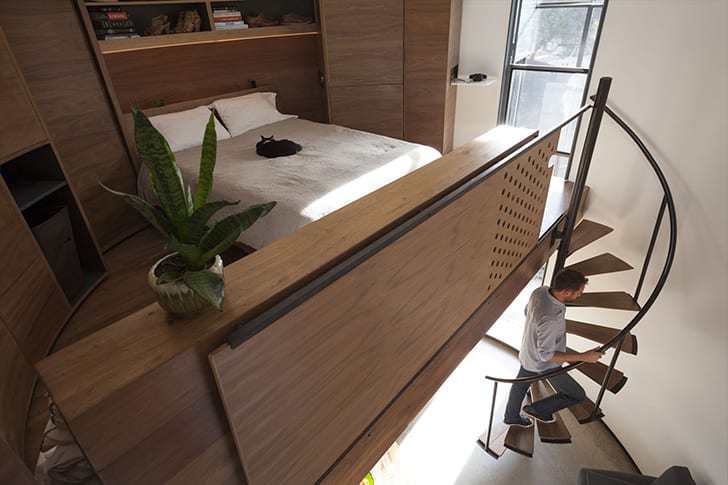
Shauna and Christoph retained the oculus that is commonly used to provide air circulation within grain silos. Christoph also applied spray foam between the inner and outer walls to insulate the house. Among the silo home's more eye-catching design elements is a black-steel-and-wood spiral staircase leading to the loft bedroom.
The couple carried on the walnut theme in the bedroom cabinetry but with some touches of brushed steel added to reflect the industrial origin of the silo. Shauna and Christoph's bedroom also features plenty of standing room, a luxury not found in most tiny houses.
Enjoying A Cinematic Experience
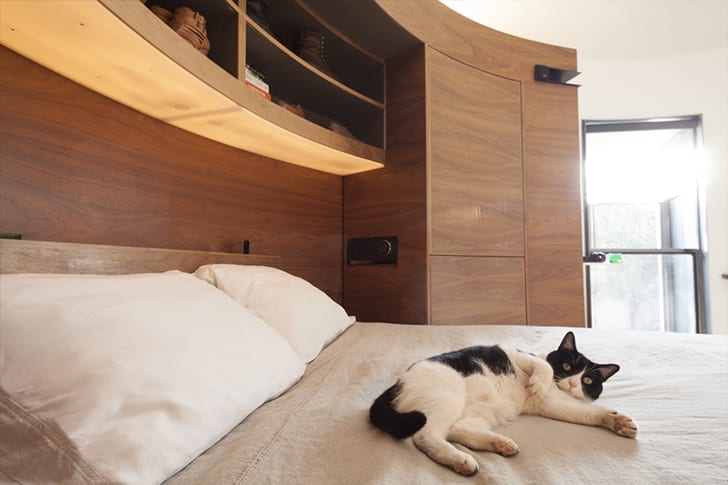
Another unique feature of Christoph and Shauna's bedroom is the projector enabling them to curl up in bed together and watch widescreen movies on the wall directly opposite them. The couple also installed loudspeakers beneath their bed so they could enjoy the full cinematic experience.
Because of the silo's height, the bedroom offers spectacular views of the surrounding Phoenix skyline as well, unobstructed by nearby properties. Christoph remarked that sometimes the home felt like a remote cabin, while Shauna shared that she'd had the best sleep in the silo house, suspecting it had something to do with the round walls.
Retractable Shelves Come In Handy
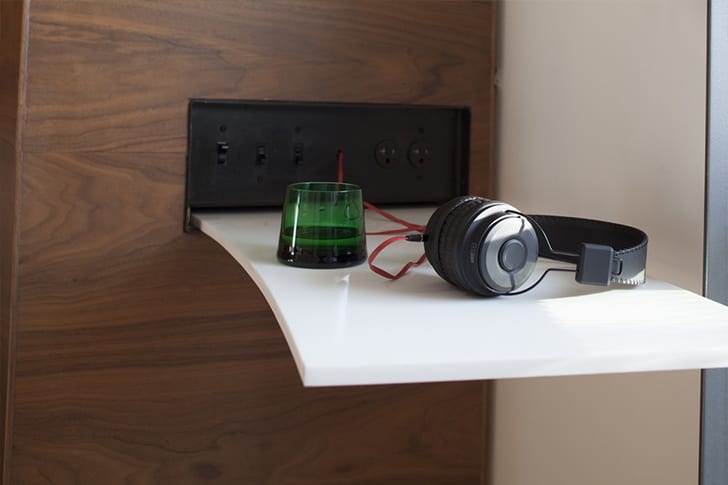
Christoph's attention to detail comes through once again in the functional space he created for the bedroom. In place of standalone bedside tables, the silo house has curved retractable shelves that seamlessly disappear when they're not in use, clearing some much-needed space in the bedroom.
Recognizing that every square foot of their tiny home would be precious, Shauna and Christoph had aimed to design a tranquil yet ergonomic living space. Shauna believed tiny living was good for their well-being, declaring that she loved discovering how to use space more efficiently.
A Clever Design For The Cabinetry
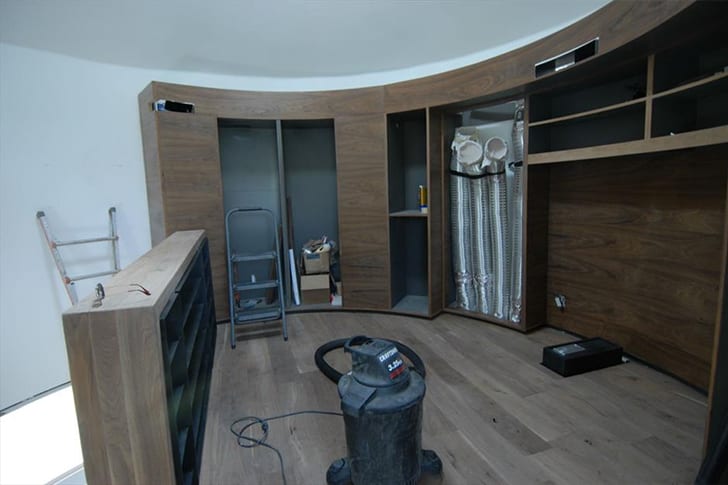
Storage space is often limited in tiny houses, most of which have to use just about every available space for storage. Both Christoph and Shauna had to part with some belongings when they moved into the silo home, though Christoph actually found it to be very liberating.
Yet Christoph and Shauna have more than enough closet space in the bedroom for their clothes. Rather than struggle with bulky regular furnishings, the couple decided to let the arc of the silo guide their design, as evidenced by the curved cabinetry throughout the house.
A Kitchen With Abundant Shelving
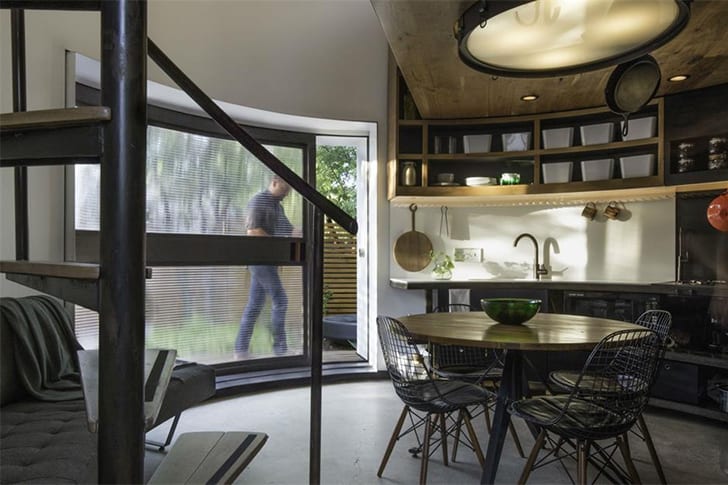
As with the cabinetry, Christoph built every single shelving unit in the kitchen to hug the silo's arched walls. Thanks to the curved design, he and Shauna have more than adequate room on the shelves for their dishes, a rare feature in a tiny home.
In addition to using the shelves as a mini pantry, the couple hangs some of the pots and pans on the kitchen light fixture for easy access. The kitchen is also stocked with appliances we expect to find in a regular house, as well as ample counter space for food prep.
Both Table And Extra Counter Space
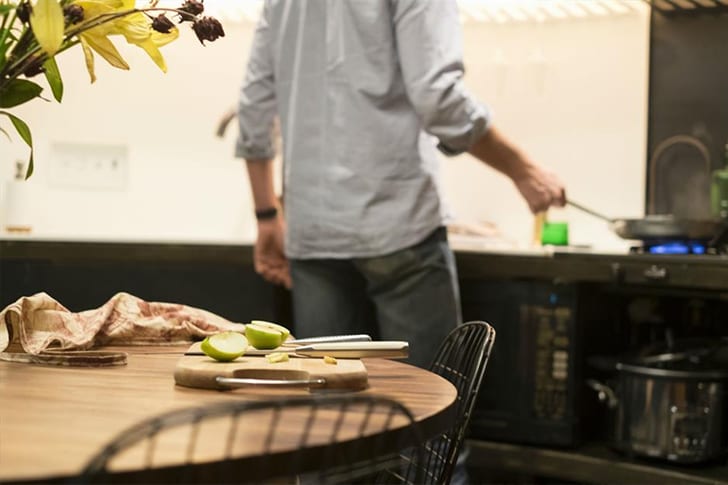
Christoph placed a round dining table at the center of the silo, directly beneath the circular skylight, thus providing an intimate space for him and Shauna to enjoy meals together. It’s also close enough to the kitchen to serve as extra counter space for preparing food.
When the sliding back door is open, the table gives Christoph and Shauna a great view of the backyard as well. They chose a tabletop that blends in perfectly with their walnut color scheme, along with chairs whose black metallic backrests match the steel accents.
A Cozy Indoor Bathroom

The silo house has a cozy little bathroom located on the ground floor right next to the kitchen. An exception to the otherwise-open layout of the house, the bathroom is covered by a cabinet door for privacy. Besides a sink and a toilet, the bathroom also has a shower.
A functional indoor bathroom is yet another luxury for most tiny houses, though owners may prefer to have one if there's enough square footage. Some owners opt for regular toilets hooked up to sewer lines or septic tanks, while others favor the compostable kind to avoid plumbing repairs.
A Custom-Made Curved Sofa
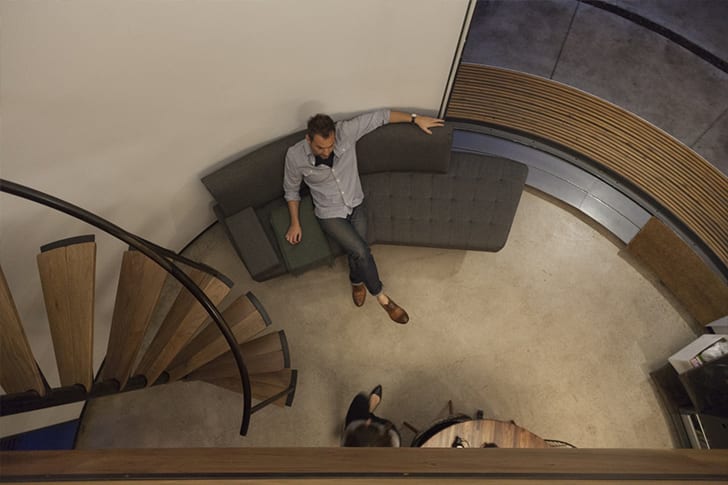
Just as the couple avoided 90-degree angles in the tiny home's cabinetry and shelving, Christoph designed their furniture to embrace the shape of the silo as well. He came up with a sleek bespoke sofa curved to fit perfectly against the rounded wall behind it.
In addition to enjoying the IMAX experience from the comfort of their bed during movie nights with Shauna, Christoph can relax on the sofa while catching his favorite shows. Across from the sofa, a TV set is deftly integrated into the cabinetry for the kitchen.
An Unobtrusive Cooling System
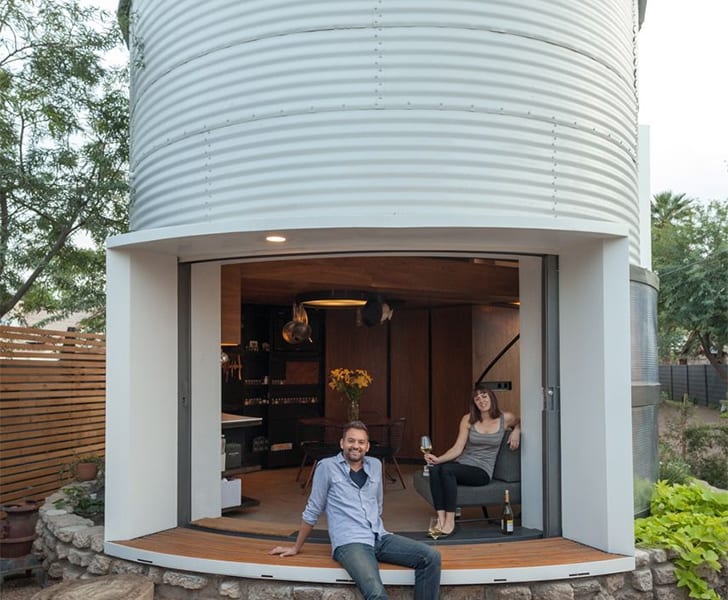
A particularly clever design element of Christoph and Shauna's silo tiny home is the underground cooling system that combines with the retractable skylight to provide sufficient air conditioning inside the house. The subterranean air ducts help to passively offset the noise from the cooling system.
Another reason the couple chose to install the cooling system underground was that the corrugated steel walls of the silo would have amplified the cooling system's noise. Christoph explained that he loved incorporating technology into his designs but preferred it to work behind the scenes.
A Convenient Sliding Back Door
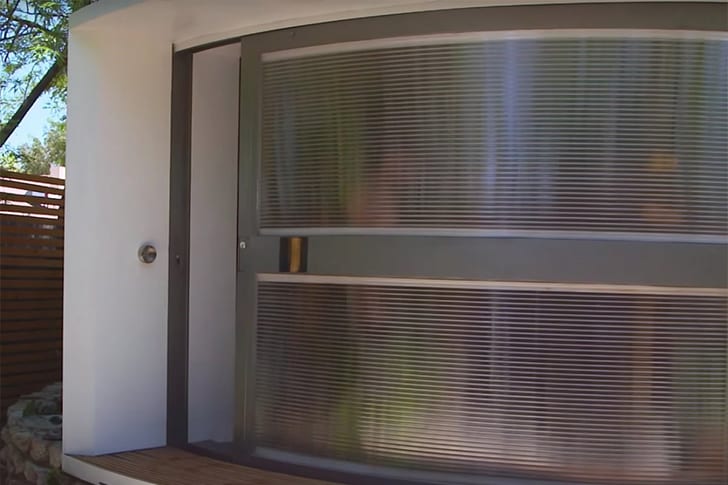
Christoph built the silo tiny home's arched sliding back door himself, using Polygal, a polycarbonate material often found in greenhouses, to let in sunlight while screening the house from prying eyes. The 10-foot door also features an intimate porch leading to the elegant yard outside.
Having never worked with Polygal before, Christoph actually picked up a new skill, later using the same material to build the customized sliding windows in the house. To avoid digging into their savings account during construction, the couple utilized as much repurposed material as possible, including upcycled walnut flooring.
A Highly Functional Outdoor Space
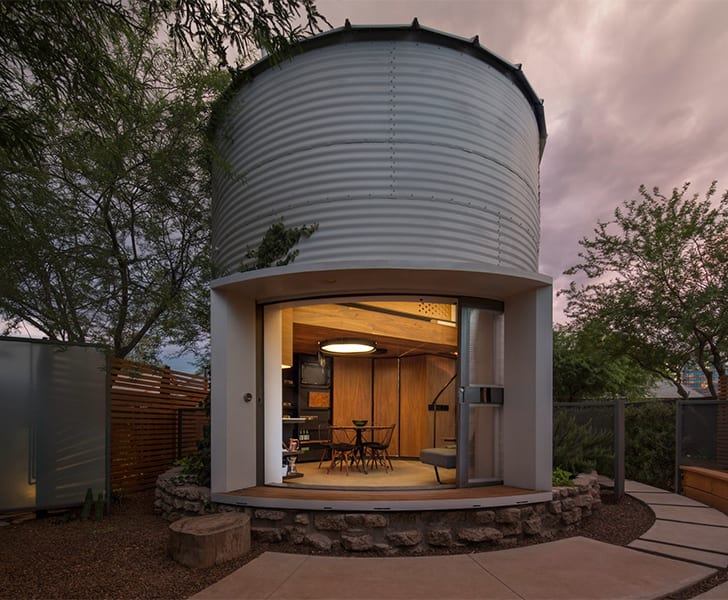
Christoph and Shauna's arched design for the silo house continues outside with a small private garden that wraps around the property. The ground cover, slatted privacy fence, and outdoor sitting area along the graveled pathway to the front door combine to create a serene environment.
Other features of the yard include a couple of raised garden beds so Shauna and Christoph can try their hand at growing vegetables, as well as an outdoor shower under a shade tree. The landscaping design thus manages to be both minimalist and highly functional.
Their Own Personal Holistic Retreat
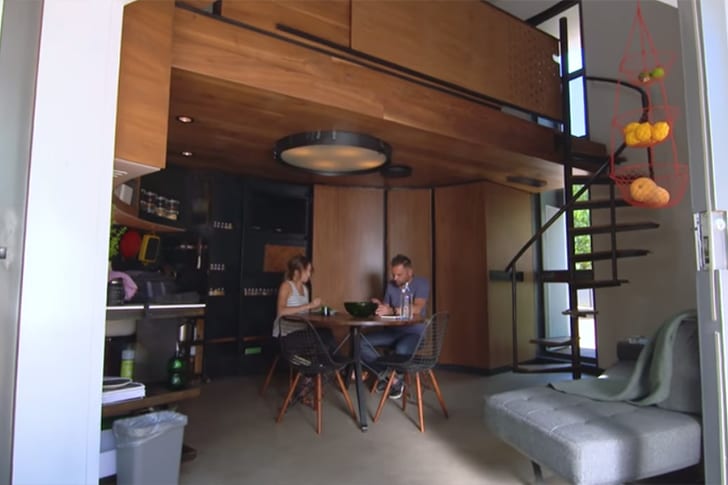
In addition to the custom-designed landscaping work in the yard, Christoph is credited with transforming the old silo into a holistic retreat for himself and Shauna. Except for two Eames chairs, he built everything with his own hands, something not many people can brag about.
The silo home's indoor layout still leaves room for a few future additions. For instance, the couple could add some more plants inside the house. Other than that, though, Christoph and Shauna have all they could ever need neatly tucked away inside their tiny house.
A Pioneering Approach To Tiny Living
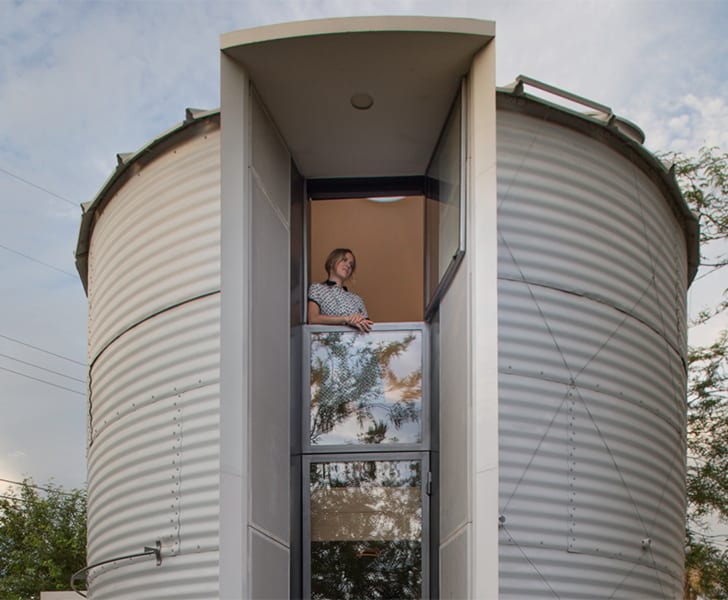
The story of Christoph and Shauna's silo tiny home has gone viral because of their truly original design. Although theirs isn't the first silo house ever built, it stands out for the custom-made furnishings and novel approach to ergonomics that Christoph incorporated throughout the project.
Shauna and Christoph's success in building a silo home also shows why people should consider going the unconventional route instead of worrying about where to buy a home. Christoph's company, Kaiser Works, now gets requests from all over the world for minimalist houses like theirs.
Innovative Products At Kaiser Works
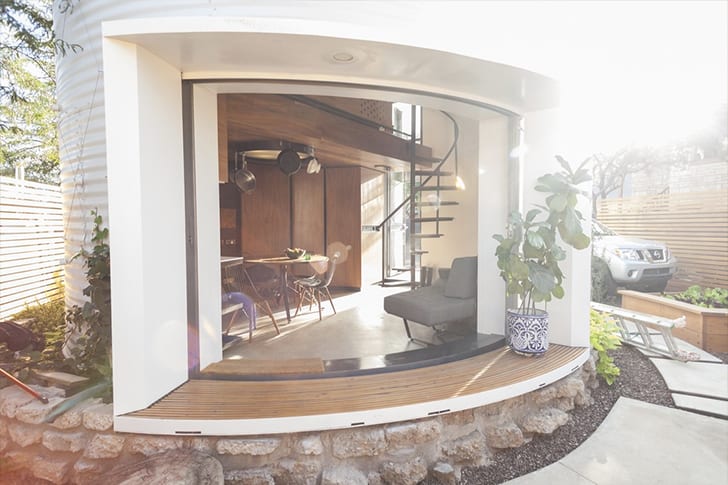
Through his company, Kaiser Works, Christoph has worked on a wide range of design projects. Though the company specializes in building its signature futuristic table designs, there are other furnishings for sale as well at its website, kaiserworks.com. Since designing his own sofa, for instance, Christoph has built others for clients.
Kaiser Works also has a division called K-Box that offers modular home designs. These plug-and-play smart homes come in two one-bedroom configurations with an entertainment area that can accommodate up to two guests. K-Box can deliver them fresh from the factory to virtually any location.
